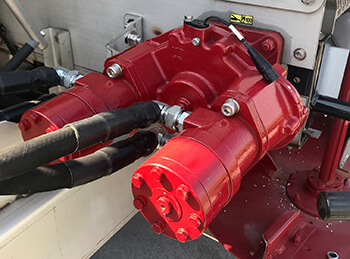Prepare Your Equipment for Fall Applications With These Maintenance Musts
Aug 26, 2019

Is your spreader truck performance-ready for fall applications? If not, your bottom line could be affected — whether it’s the cost of downtime and service call or the product loss from erratic rates and inaccurate placement.
Making sure your truck is ready to run doesn’t take much time or effort, says Robert Gannaway, GPS specialist for TFC’s Ag Equipment.
Here’s his checklist of maintenance musts for fall application preparation:
Gear box
GPS
Spinner fins
Cables
Chain/belt tension
Once you’ve completed the checklist, perform two application tests:
For more information and advice on equipment maintenance, email Robert Gannaway at rgannaway@ourcoop.com, or contact William Jolly or any of the knowledgeable staff at TFC’s Ag Equipment Department by calling 1-800-836-6075.
Making sure your truck is ready to run doesn’t take much time or effort, says Robert Gannaway, GPS specialist for TFC’s Ag Equipment.
Here’s his checklist of maintenance musts for fall application preparation:
Gear box
- When a truck randomly stops running in a field, check the gear box first. Because the gear box is located on the rear of the truck’s bed, fertilizer and dust can cause build up in the oil and sensor and corrode the cables.
- Change the oil. Use 80W-90 gear oil — 12 ounces for a tandem motor and 10 ounces for a single. Change the oil at least twice a year; it usually it takes more than that if the truck is used a lot.
- The rate sensor needs to be cleaned up and checked because build up can interfere with rate consistency. Also check and clean the cable that connects to it.
GPS
- The GPS provides ground speed. If there’s no ground speed indicated, the bed chain won’t move. Don’t wait until you’re in the middle of an application to realize your GPS is erratic.
- First, check the time from when you turn on the display until it reaches full GPS lock. A rule of thumb is an average of about 5 to 7 minutes. If it gets much past that and is consistently taking 10-plus minutes, it needs some maintenance.
- Check the cabling; it may need to be cleaned or tightened.
- Take a look at the antenna. It may have come in contact with a limb, creating a hairline crack that leaks and after a few months, it will get corroded. If so, replace it.
Spinner fins
- Check spinner fins at least one a year to verify that they don’t need to be replaced.
- Over time, the fins on a spinner pan can get bent or beveled out from wear, and eventually it will affect your pattern.
Cables
- Don’t forget to check the cables that run from the bed to the cab. The wraps on these cables can trap fertilizer dust and create corrosion.
- If you find a place that is bad, then the cable probably just needs to be replaced unless you catch it early enough to clean it.
- Inspect cabling up into the cab at least twice a year – before each season.
Chain/belt tension
- If it’s too tight, it will stretch. If it gets too loose, it can get wrapped up or create rate issues.
- Each brand of spreader body is a little different; check your manual for factory recommendations on chain/belt tension.
- If you can’t find that information, just call Ag Equipment at 1-800-836-6075.
Once you’ve completed the checklist, perform two application tests:
- Check the calibration with the “catch test.” Run product off the truck and catch it in a container. Weigh the product in the container and compare that amount to your display. If you find a variance, there’s an equation that will adjust the calibration value.
- Lessen your chance of streaky fields with the “pan test.” Place pans evenly across a field, then drive over the end pans in the same direction while running product. Take the contents from each pan and pour into test tubes. Compare the product of each for uniformity. If you find inconsistencies, you have time to make adjustments. Perform this test twice a year before each application season.
For more information and advice on equipment maintenance, email Robert Gannaway at rgannaway@ourcoop.com, or contact William Jolly or any of the knowledgeable staff at TFC’s Ag Equipment Department by calling 1-800-836-6075.